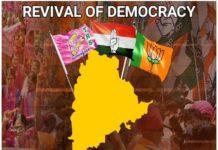That the women of India in 21st century are forging ahead by grabbing every opportunity and thus are creating a level playing field, equal to that of men, appears a fallacy, when we go by the facts pertaining to the ordeal undergone by them.
It is a fact that neither the legislation nor its implementation is able to bring about desirable impact on improving the plight of women in India, if not the status. The Pre-and Post-Independence legislations could not leave any indelible mark on the welfare of the women. As per the data of the National Crime Records Bureau (NCRB), New Delhi, on ‘Crime in India – 2016,’ crimes against women are categorised under four heads: 1.
Cruelty by husband or his relatives; 2. Assault on women with intent to outrage her modesty; 3. Kidnapping and Abduction; and, 4. Rape. Of the total number of cases reported (3,38,954) in 2016, a majority of the crimes against women were reported under the first category, i.e., cruelty by husband or his relatives to the extent of 32.6 per cent. Next in the order are the assaults on women with intent to outrage her modesty at 25 per cent, kidnapping and abduction at 19.0 per cent, and rape at on 11.5 per cent.
India’s track records on legal dispensation is quite poor and tardy. The well-acclaimed principle of ‘Justice delayed, is justice denied’ has no much sanctity with us. In the matters of civil nature, one life time is considered average and in case involving crimes, the average appears to be a decade. As per the information made available by the Supreme Court of India to the Union Ministry of Law and Justice, the total number of cases pending with them by December 18, 2017 was 54,714.
The total number of cases pending at High Courts are said to be about 6 lakh and at District Courts about 2.8 crore. While this being the criminal record and the dispensation of Justice, it is naïve to expect that something is going to change overnight and bring the criminals to book and peace and dignity established for women of India. Then where and how to find the solution is the crux of the issue. It should not be something like ‘searching for a black cat in a dark room’.
The present author strongly believes that one needs to strike at the root of the problem, i.e., the Indian Social System. India as a society is said to be dominated by Hindus and hence ‘HindustanHamara’. The races that are made up of Indians are from Caucasoid (who said to have been originated in the regions of Europe, Turkey, Iran, Afghanisthan and Middle East), mongoloid and Australoid.
Research studies of late, have been claiming that there was no ‘genetic influx of Aryans’ 3500 years ago and the concept was invented as a ‘counter-measure against undesirable forces. It is believed by the historians that the ‘concept of Aryan or Aryanism’, gave them the required resolve to preserve their ‘assumed identity.’ If this could be believed to be true, what is the social identity of the Indian; based on which to define the social relationships, and to decide upon the ratio between men and women. Therefore, fresh research is required to be initiated from the origins of an Indian, with specific focus on the relative identity of men and women in their social relationships.
While the entire Indian society is suffering from this pre-ordained virtual division, the position of women across all the categories is still deplorable. A woman belonging to any category (any of the first four) Is treated as equal to the fifth category. They do not have any rights, except duties and responsibilities. Unfortunately, there has been a clear contrast with the status attached to women in mythology and the treatment meted out to her. The sacred texts regard women as the ‘Mother Goddess as Durga, kali, chandi or shakti’, considered to be the origin of the universe.
This supreme status has slipped down slowly to the level of a ‘slave’; where controls have become accepted. Restrictions on the women permeated in various forms such as movements, contacts, sexuality, chastity, transgression, and finally the limiting of all kinds of freedom. The supreme position of ‘Goddess’ has been relegated to the notion of ‘Pati Parameshwar’; where husband is the Supreme God and thus there is no life imagined beyond the vicinity of a man, and if he expires, she is lead into self-immolation-the practice of sati.
It is the considered view point of the author that the society needs to shed all these beliefs, customs and practices that make or treat women as ‘less equal.’ Unless there is radical change in the ‘social self’ of the women, having unfailing faith in the ability, power and prowess, there would be little to help the Indian women come out from these tangles. The very perception of the people on ‘women’ shall change. They shall move towards an identity of their own, emerging from within.
#KhabarLive






